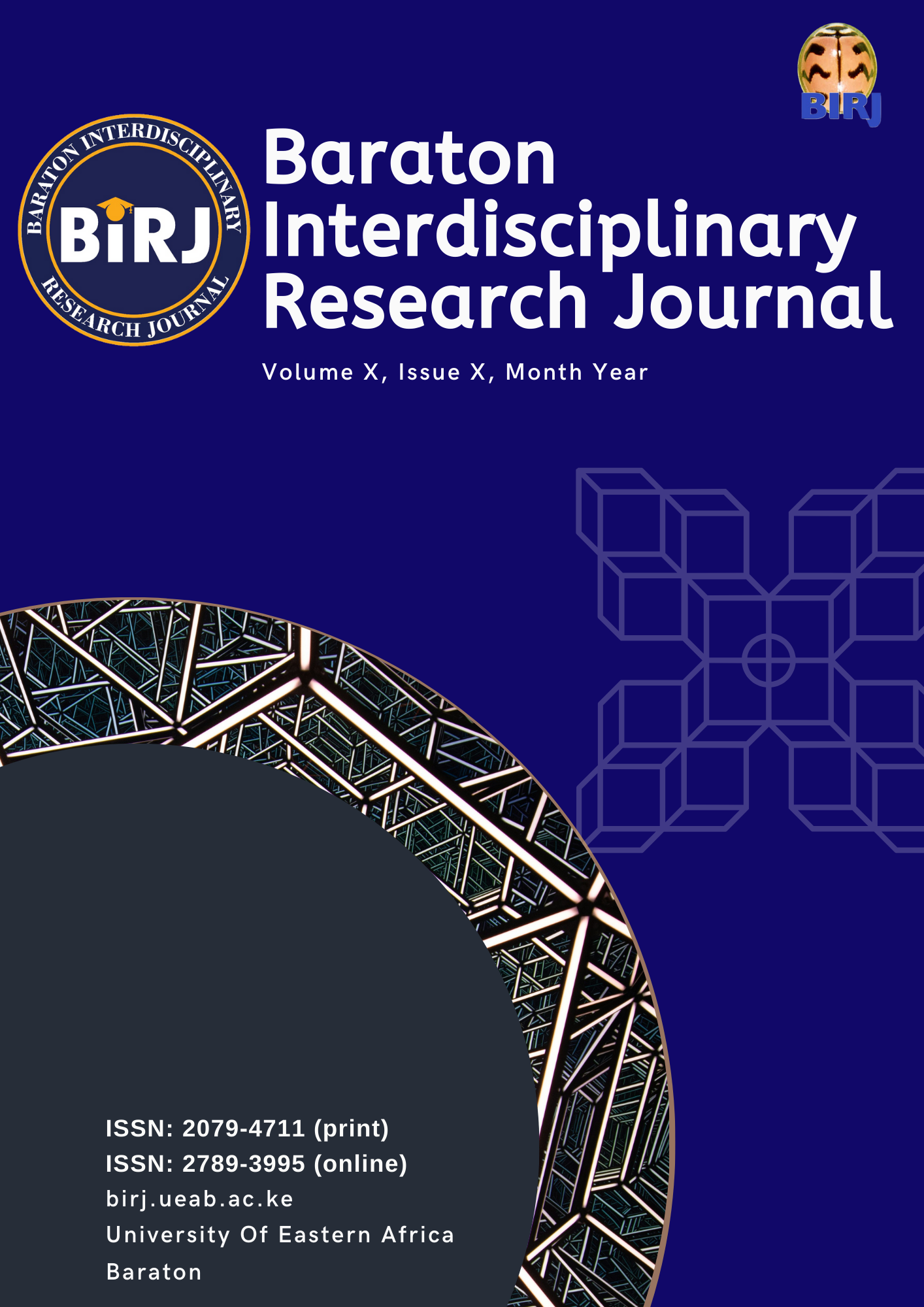TOXIC, ANTIFEEDANT AND REPELLENT ACTIVITY OF AQUEOUS CRUDE EXTRACTS OF Tephrosia vogelii HOOK ON THE LARVAL STAGES OF Helicoverpa armigera HÜBNER
Keywords:
repellence, antifeedant, , toxicity, , armigera, , Helicoverpa , Tephrosia vogeliiAbstract
Laboratory bioassays were conducted to evaluate the bioactivity of aqueous crude extracts of Tephrosia vogelii Hook against
Helicoverpa armigera Hübner larvae. Fresh chickpea leaves, immersed in aqueous crude extracts of Tephrosia vogelii at
four rates (0, 5, 10 and 20% w/v), were assayed for toxic, antifeedant and repellent effects against 2nd and 3rd instar larvae of
- armigera in a completely randomized design (CRD) with 3-5 replicates per treatment. Ordinary water and Dimethoate
(Rogor E40) ® at 2% v/v were included as negative and positive controls, respectively. Data on corrected percent mortality,
repellence and deterrence coefficient were first homogenized using angular transformations before being subjected to analysis
of variance (ANOVA) and means separated by Tukey’s HSD test. Results showed that the toxic, antifeedant and repellent
effects of crude aqueous extracts of T.vogelii against H. armigera larvae were significantly (P<0.0001) influenced by intra
plant variability, concentration applied, duration (hours) and corresponding factor interactions. At the highest concentration
of 20% w/v, the aqueous crude extracts obtained from the leaves (22%) and pods/flowers (av. 11%) of T.vogelii were weakly
toxic. In the antifeedant bioassay, leaf extracts caused the highest reduction (96%) in weight of larvae followed by pods/
flowers (79%) and succulent stems (2.5%), respectively. There were corresponding reductions in larval feeding as the
concentration of aqueous crude extracts increased. In the repellence test, except for leaf and pod/flower extracts at 20% w/v
and 1 h exposure that produced moderate percent repellence (41.67%) against the larvae, there was a dose- and exposure
time-dependent attraction of H. armigera larvae to chickpea leaves (food) treated with aqueous extracts of T. vogelii. The
plant offers hope as a potential cost-effective and environmentally benign antifeedant for H. armigera control in chickpea
Downloads
Published
License
License Terms
All articles published in the Baraton Interdisciplinary Research Journal (BIRJ) are licensed under a Creative Commons Attribution-NonCommercial-ShareAlike 4.0 International License (CC BY-NC-SA 4.0).
This license permits users to share (copy and redistribute) and adapt (remix, transform, build upon) the material for non-commercial purposes, provided that proper attribution is given to the original authors, a link to the license is included, and any derivative works are distributed under the same license.
Full license details: https://creativecommons.org/licenses/by-nc-sa/4.0/
Most read articles by the same author(s)
- J.O. Ogendo, BIOCONTROL POTENTIAL OF SELECTED PLANT ESSENTIAL OIL CONSTITUENTS AS FUMIGANTS OF INSECT PESTS ATTACKING STORED FOOD COMMODITIES. , Baraton Interdisciplinary Research Journal: Vol. 1 No. 1 (2011)

